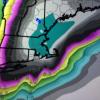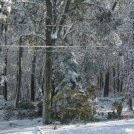All Activity
- Past hour
-
Cant wait. It's coming. TGIF and happy almost weekend all.
-
I was trying to think of a way to describe what its been like and that is about as accurate a description as any I could think of.
-
I know fall is nigh because of all the Halloween decorations and candy in stores. Pumpkins will be for sale at Harris Teeter within a month. It’s foggy and 69 at Winston-Salem. The fogs of August are really big this year
-
Per the point and click it looks like they backed off on the mid 90’s for next week?
-
Folks from New Hampshire clogging 93 South to get a break from the heat. Crazy world...
-
It’s abbreviated for Chamber of Commerce. There are certain individuals who think smoke filled skies, lung hacking, and sweatshirts in the middle of summer as Chamber of Commerce. It’s silly because our summers are basically the Mid Atlantic now so Chamber Of Commerce or COC is really bathing suites, jet skis, and a rum punch in hand.
-
63 was the low. Very smoky still.
-
Yeah, I was just discussing this shift across the seasons a few days ago. The mid-latitude ridge from Japan across the U.S. to Europe has been a new dominant player since the 18-19. This has lessened the influence of the usual higher latitude teleconnections like the WPO, EPO,PNA,AO, and NAO. So we have been getting strong Southeast ridge patterns even with -EPO,+PNA, -WPO,-AO, and -NAO. It essentially forces the winter storm track further north through the Great Lakes. So in February we had our first -5 -AO result in a strong cutter leading to the record snows in Toronto and Montreal instead of the typical KU storm track. We also saw the -EPO +PNA merger back in December with the mid-latitude ridge leading to the 4th warmest December on record in the CONUS with what used to be colder teleconnections when this mid-latitude ridge was absent in the past. During January the 850 mb cold pool was at the smallest on record. So what used to be very cold telconnections in the past were much milder than past instances with similar higher latitude teleconnections. I also posted the other day on how we just set a new all-time July record 500 mb height record from Japan to Europe along 40N to 50N. This is why the Southeast ridge was the strongest on record for July even with a strong -EPO and +PNA block on the Pacific side. Past instances of such a strong ridge in the East had more of a -PNA and weaker blocking near Alaska than we have been seeing over the last decade. So this new mid-latitude ridge is becoming its own teleconnection leading to new combinations of 500mb patterns that we used to get before 18-19.
-
Welcome aboard. I lived in Knoxville during all of the 70s. I had no idea how good that decade was at the time. During the 70s it often started snowing during late December and usually lasted into February quite consistently. Snow droughts weren't even really anything I thought about, though there were certainly some mild winters embedded during that decade. I also lived there during the 93 blizzard, the 93-94 winter, and 95-96 winter. The 90s did feature some snowless winters or nearly snowless in Knoxville. Those are easily the worst winters of my lifetime, but again, with some great winters embedded. Knoxville has done really well recently(2020s to clarify), even better than TRI during many winters. I do think that notch along the Plateau funnels precip into the Knoxville area - someone (maybe @TellicoWx) had a great post last winter about it. At TRI, we have no such relief...just a solid Plateau wall to our West. At first I was a bit skeptical that the Knoxville notch helped. But when out West, you can see where openings in the mountain ranges (which lie west to east) have higher snow totals. For example, Alpine(WY) is much snowier than Jackson(WY), but Alpine is at a lower elevation. However, Alpine sits right in one of those notches if you look on Google Earth. Places in Star Valley to the south have less say in Afton. Afton is at higher elevation - but no opening in the mountain for snow to reach it easily. So, long story short. I think Knoxville does really well during certain NW flow events(almost wnw flow events), during snow storms where the fetch is from the SE(but limited warm nose), and they do incredibly well with sliders. Sliders seem to be our best snow makers these days, and that would also explain TRI getting less snow during recent winters. I would say "for now" that 4-6" is about right for Knoxville, BUT recent trends definitely have Knoxville trending better. I would guess there are places in the Knoxville which are averaging 10+" during good winters recently. At one point during the 2010s and 2000s, I can remember on this forum where Knoxville would get very little compared to TRI. Recently, Knoxville has had two really big snows. I do think the sliders in conjunction w/ that notch where I-40 comes into town is the big contributor. Even during those 197-s winters as a kid, I knew the best snows usually went from Memphis to Knoxville. Still true today. I also think the 2020s and late 2010s cold shots, though short lived, have produced an environment where Knoxville kind of is in the sweet spot. Gulf moisture interact w/ the cold air from the North at about Knoxville's latitude. South of that, no luck. North of that, too cold. Again 4-6" is probably right as a generality, but I wouldn't be surprised for Knoxville to surpass that average during some(not all) of the upcoming winters if trends persist. I think this winter has a chance to be good for TYS. Here is a TRI note....The early 2000s didn't have a tone of snow here. As this century has progressed, small snows have become more frequent as have some the frequency of short-lived, brutal cold snaps. Big snows have been less. Why? I suspect moderate to strong La Ninas are the likely cause along w the aforementioned PDO by met85. We have had a load of La Ninas since 2016 or so. In NE TN we really need a weak ENSO state but not neutral and definitely not moderate to strong. As John notes, that is less a player as you head west and has less correlation from the Plateau westward. Though, I could make a pretty good case that middle and western Tenn have done decently well w/ the La Nina pattern. Interestingly, east Knoxville and the Foothills are probably is in the same boat as TRI. TYS during good winters: 8-10" (frequency of that about 1 out of every 2-3 years currently) w/ higher lollipops depending on local TYS during lousy winters 2-4" It just seems to want to snow in Knoxville of late. That is weird to say from a scientific standpoint, bit it is kinda true.
-
Feels terrible to ask this and there are going to be some great responses.... what's COC?
-
Finally, no smoke. And about right as we warm up and start shifting the air mass around. Fuck the COC.
-
Sweat through it indeed. I'm going to be sweating and thinking about how wonderful it will be when it's dark prior to 5pm. Magical time of the year. Just over 3 months away!
-
There's liable to be sea-breezes into eastern MA and coastal CNE with that synopsis today. It'll keep temps down, so using Logan for real world experience is probably a dumb idea. Later in the day, this could possibly gathered enough mass to sneak a low level cooling west to a termination somewhere near an Ayer - Worcester position.. Not certain though because tho the look for that is in place, even the higher res suppress a wavy breeze boundary from moving W. Prior to that the highs should make the low or mid 80s.
-
Records: Highs: EWR: 101 (2001) NYC: 99 (2001) LGA: 98 (2001) JFK: 99 (2001) Lows: EWR: 56 (1989) NYC: 54 (1903) LGA: 59 (1989) JFK: 58 (1989) Historical: 1874: Swarms of Rocky Mountain locust invaded Denver, Colorado. Millions were seen cruising through the air. The insects were picked up by a thunderstorm gust front and carried into the city. The grasshoppers ravaged crops in surrounding counties for the last month. 1878 - The temperature at Denver, CO, soars to an all-time record high of 105 degrees. (The Weather Channel) 1881 - A cloudburst and flash flood occurred at Central Springs, CO, and Idaho Springs, CO. (David Ludlum) 1882 - An August snowstorm was reported by a ship on Lake Michigan. A thick cloud reportedly burst on the decks covering them with snow and slush six inches deep. Snow showers were observed at shore points that day. (David Ludlum) (The Weather Channel) 1924: Hancock, Minnesota: A lightning bolt during a dry thunderstorm kills 47 cattle at a local farm. The livestock had crowded together under the branches of a large spreading willow tree when the bolt struck the tree. Bodily contact seems to have provided the means of conveying the charge among the animals. (Ref. WxDoctor) 1928: A hurricane moved in from the Bahamas and made landfall near Stuart, FL. Damage was heaviest from south Brevard to St. Lucie Counties. Houses were unroofed and citrus trees and large oaks uprooted. Coastal highways were flooded and many bridges were undermined. Two people died. (Ref. Wilson Wx. History) 1939: A tornado outbreak across central and southern Lower Michigan resulted in two deaths and about 100 injuries. A violent tornado moved across the southeast part of Kalamazoo, MI destroying dozens of homes and killing two people. More homes were destroyed and six people were injured in northern Kent County, northeast of Cedar Springs. (Ref. Wilson Wx. History) 1967: Las Vegas, NV was hit by two storms which bore in from the south and covered a 50-square-mile area. Damage was estimated in the hundreds of thousands of dollars. The Showboat Hotel on Boulder Highway was forced to close its casino, restaurant, and showroom when muddy floodwaters invaded through the kitchen doors, passed clearly through the large building and out the front doors. At Caesars Palace on the Strip, a casino boss said the water was deep enough in the front of the hotel to "swim in". Over 10 inches of rain fell during a two week period to cause the Great Fairbanks Flood in Alaska. $100 million dollars in damage resulted. (Ref. AccWeather Weather History) 1969: Severe thunderstorms moved north central South Dakota to the southeast sections of the state. Golf ball size hail was reported just west of Mobridge while Wessington Springs had tennis ball sized hail. Two people were injured in Sioux Falls when strong thunderstorm winds blew in a plate glass window at a drug store. Near Mitchell a barn was devastated so badly by a tornado it appeared as if it had exploded. Portions of the building could not be found and the same tornado carried a steel granary a half mile. (Ref. Wilson Wx. History) 1972: An unusual mid-summer tornado struck near the town of Byers, Texas, in Clay County. Damage was limited to barns and storage sheds on several farms east of Byers. The tornado exhibited an unusual movement, from southeast to northwest. (Ref. Wilson Wx. History) 1980: Dangerous Hurricane Allen briefly weakened to a Category 4 storm as it skirted the Yucatan Peninsula. Already a Category 5 twice during its life cycle, Allen would briefly regain Category 5 intensity for a record third time on the 9th as it headed for the Texas coast. (Ref. Wilson Wx. History) 1983 - The temperature at Big Horn Basin, WY, reached 115 degrees to establish a state record. (The Weather Channel) 1987 - Thunderstorm rains in eastern Nebraska sent the Wahoo River and Ithica River above flood stage. Thunderstorm rains in western Iowa sent the Nishnabotna River over flood stage. Up to seven inches of rain deluged the Council Bluffs area Friday evening and Saturday morning. Thunderstorms produced 4.4 inches of rain in three hours Friday evening, along with golf ball size hail. (The National Weather Summary) (Storm Data) 1988 - Thunderstorms developing along a slow moving cold front produced severe weather from central Kansas to southern Wisconsin late in the day. Thunderstorms in Iowa produced hail three inches in diameter at Vinton, and produced wind gusts to 75 mph at Donohue and near Mount Pleasant. (The National Weather Summary) (Storm Data) 1989 - A total of ninety-nine cities in the central and eastern U.S. reported record low temperatures for the date, including Alpena MI with a reading of 40 degrees. Mount Mitchell NC was the cold spot in the nation with a morning low of 35 degrees. Early evening thunderstorms around Las Vegas NV produced wind gusts to 116 mph. The high winds damaged or destroyed about eighty- two aircraft at Henderson Sky Harbor Airport and McCarran International Airport, causing fourteen million dollars damage. (Storm Data) (The National Weather Summary) 1996: Unusually cool temperatures were recorded over parts of the northern Plains and Rockies. The temperature dropped to 36° at Saratoga and Shirley Basin, WY while Laramie and Rawlins, WY bottomed out at 39°. Record lows included: Pocatello, ID: 40°, Casper, WY: 44° and Valentine, NE: 46°. (Ref. Wilson Wx. History) 2001: Slow moving thunderstorms dumped 5 inches of rain in a two hour period over the area between Telluride and Placerville, CO. The torrential rains unleashed mudslides that covered Highway 145 with up to six feet of rock and mud. The road is the only route in and out of Telluride and it was closed for several hours. Several vehicles were swept from the road, some all the way to a river bed below the highway. Nine people had to be rescued. (Ref. Wilson Wx. History) 2004: Unseasonably cool air settled from parts of the Mid-Atlantic into the Southeast. Record lows included: Asheville, NC: 49°, Augusta, GA: 52°, Roanoke, VA: 53°, Lynchburg, VA: 53°, Grand Junction, CO: 54°, Charlotte, NC: 55°, Greensboro, NC: 55°, (Ref. Additional Temperatures Listed On This Link) 2007: A tornado bounces across Staten Island and Brooklyn, New York, ripping off roofs and damaging dozens of buildings. The EF-2 twister hop-scotched through Brooklyn's Bay Ridge and Sunset Park neighborhoods around 6:30 am.
-
Always has been a rad king! My place can’t come close to competing. Gorgeous morning today and my only complaint is I had to wake up at 8.
-
It's because the mean latitude of the westerlies/gradient is shifting N associated with CC. A shift that's doing so on the scale of life time, not mere seasons... So we don't really observe it year to year, but 15 or 20 years goes by and the jet axis are N of where they were... And idiosyncratic aspects emerge like like that where positive height anomalies cushion under the nadirs of the planetary wave spacings. I've noticed this more and more so over the years... where the bottom of the L/W axis appear to be 'compressing a balloon' at time.
-
68 / 61 sunny. Gorgeous stretch of weather in mid stream. 80s Fri - Sun, Sunday may get to 90 in the hottest spots. Heat Mon - Fri, hottest days Tue/Wed (95+) in the hottest areas 850 MB >17C (20c seems north now - kind expected). Storms / showers Wed Night. A touch cooler but still hot towards the end of next week. Overall warm - hot / humid and wetter beyond there towards the 16th with tropcial activity along the EC. 8/8 - 8/10 : Warm - dry - near normal. 90 in hot spots by Sunday 8/11 - 8/15 ; Hot , Heat peak 95+ in the hottest spots Tue/Wed. Storms possiblt Wed night 8/16 - Beyond : Warm - Hot / Humid - wetter overall 0 Tropical activity.
-
Off to the races from here on out with smoke mainly gone
-
Set a new 'cool max' (but not by much) at 73.1 degrees. Old record was 73.7 from 2015, with a 74 mark in 1992 and 2004. A cloudy/cool day on light E to NE breezes. About 90 minutes of sprinkles/mist in afternoon, very foggy this am and 61.0/59.9.
- Today
-

2025-2026 ENSO
40/70 Benchmark replied to 40/70 Benchmark's topic in Weather Forecasting and Discussion
You would be suprised how many meteorologists are relatively useless on a seasonal level.















